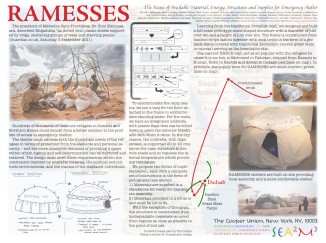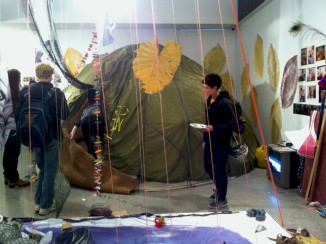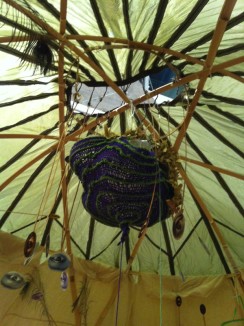R.A.M.E.S.S.E.S. Reuse of Available Material, Energy, Structures & Supplies for Emergency Shelter
This slideshow is part of: Special Projects Grant
R.A.M.E.S.S.E.S.
Reuse of Available Material, Energy, Structures and Supplies for Emergency Shelter
The landscape of Mogadishu is dotted with plastic sheets supported by twigs, which shelter groups of weak and starving people from the southern and central regions of Somalia. This is the account given by Dr. Unni Karunakara, the international president of Médecins Sans Frontières (MSF). There is a clear and immediate need for projects that improve access to emergency shelters in this region. The engineering community has an obligation to use its research and its resources on such projects, which have the potential to benefit hundreds of thousands of destitute refugees.
Professor Cumberbatch has performed several investigations into the design of shelters constructed from freely available materials in very poor countries. Building on this experience, he has taken on the challenge of disseminating the design for a shelter constructed from available materials in the streets of Somalia and in the environs of the Dadaab camp in Northern Kenya.
The shelter consists of a dome-shaped structure that draws upon the model of the traditional Somalian aqal, and the more ubiquitous yurt. The frame is constructed from bamboo strips lashed together with twine in a form close to that of a geodesic dome. With the exception of tarps, the structure is constructed from completely biodegradable materials, sourced from regions as close as possible to the point of end use. In the longer term, Cumberbatch intends to replace the standard tarps with organic materials that utilize biomimetic principles to produce hydrophobic surfaces—ensuring that the entire shelter is biodegradable. Rudimentary investigations suggest that these ideas can be implemented on a large scale.










